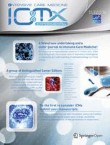Edited by Nicole P. Juffermans and José A. Lorente
Why translational research matters: proceedings of the third international symposium on acute lung injury translational research (INSPIRES III)
Current treatment of acute respiratory distress syndrome (ARDS) in critically ill patients is limited to supportive measures including mechanical ventilation. It is our view that effective therapies for ARDS c...
